How to Paint Flowers with Pastels
Learning how to paint flowers with pastels lets you capture their delicate beauty with vibrant, blendable colors. Painting flowers with pastels is a beautiful way to capture their delicate textures and vibrant colors. this guide will walk you through the process of creating stunning floral artwork using soft pastels. You’ll learn essential techniques for simplifying shapes, mastering values, blending colors, and creating depth—all while maintaining a loose, expressive style.
Why Paint Flowers with Pastels?
Pastels are perfect for floral art because:
✅ Rich, vibrant colors – No mixing required; ideal for capturing petals’ natural hues.
✅ Soft, blendable texture – Great for creating smooth transitions and organic shapes.
✅ Quick layering – Easily adjust values and details without waiting for drying time.
Now, let’s dive into how to paint flowers with pastels step by step.
Step 1: Choosing Your Reference & Sketching
Selecting a Good Flower Photo
- Look for clear lighting (soft natural light works best).
- Avoid overly complex arrangements (start with 2-3 flowers).
- Focus on contrast (light petals against a dark background help with depth).
Simplifying Shapes
Instead of drawing every petal detail:
- Break flowers into basic shapes (circles, triangles, ovals).
- Use negative space to check proportions (observe gaps between petals).
- Lightly sketch with a pastel pencil or charcoal (avoid heavy outlines).
Pro Tip: Turn your reference upside down to see shapes, not “flowers.”
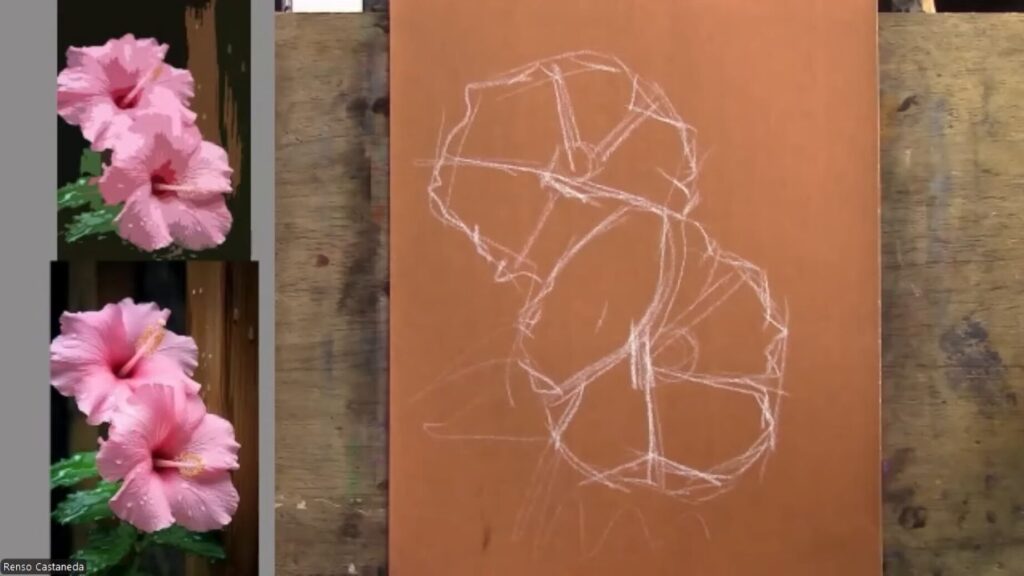
Step 2: Selecting & Layering Pastel Colors
Building a Basic Color Palette
Since pastels aren’t mixable like paint:
- Pick 5 key values (lightest highlight → darkest shadow).
- Layer colors to adjust hues (e.g., add yellow over pink for warmth).
- Start with mid-tones, then add darks and lights.
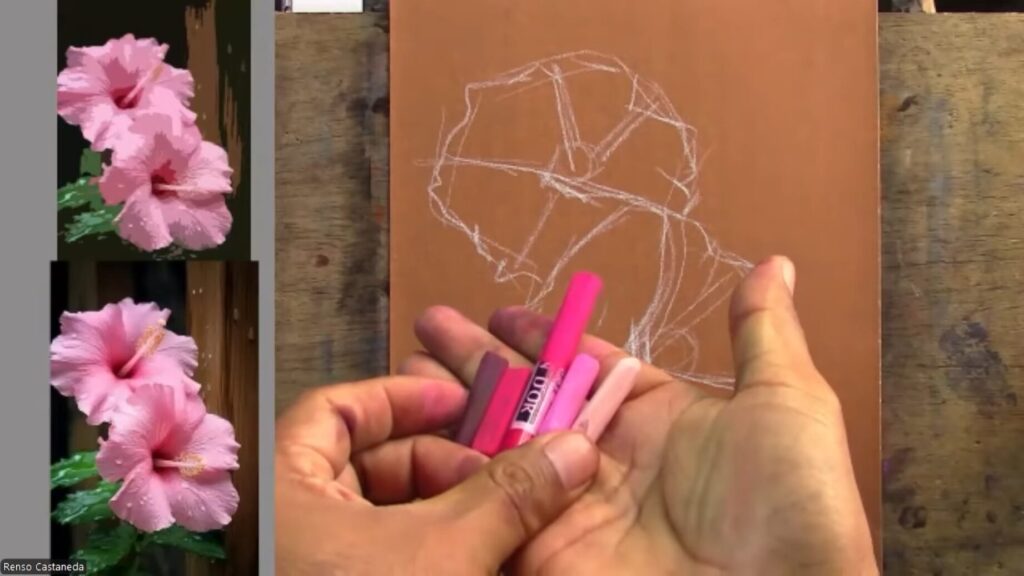
Applying Colors
- Block in large shapes first (background, then petals).
- Work dark to light (prevents muddy colors).
- Use side strokes for soft textures (petals, leaves).
Common Mistake: Using too many colors at once—stick to a limited palette for harmony.
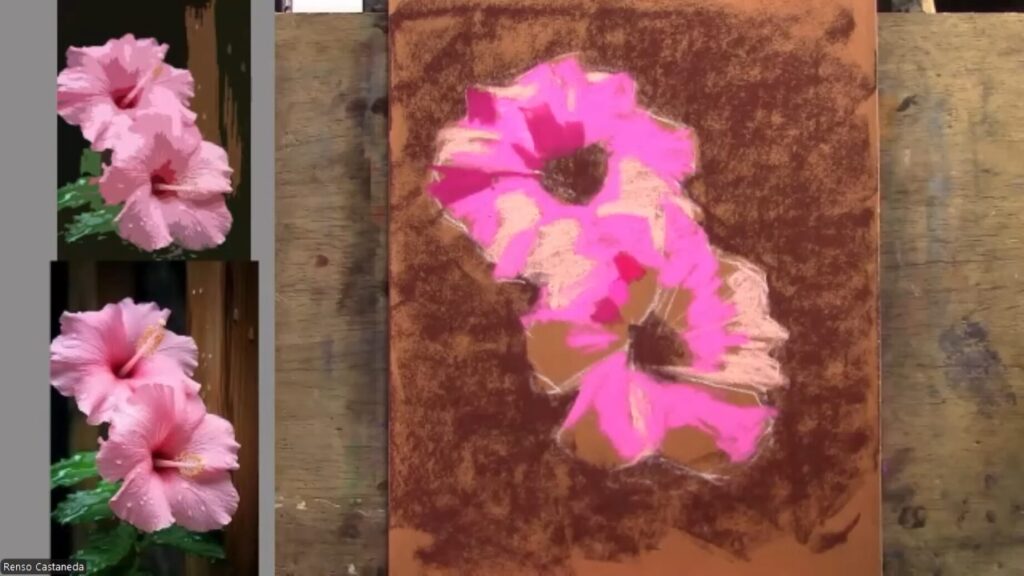
Step 3: Mastering Values for Realism
How to See Values Correctly
- Squint at your reference to simplify light/shadow.
- Check contrast (darkest shadows should be near brightest highlights).
- Adjust as you go—initial layers often look too light.
Fixing Flat-Looking Flowers
- Deepen shadows (especially where petals overlap).
- Brighten highlights (use a light pink/white for petal edges).
- Soften edges in shadow areas to push them back.
Pro Tip: Take a photo in black & white to check value accuracy.
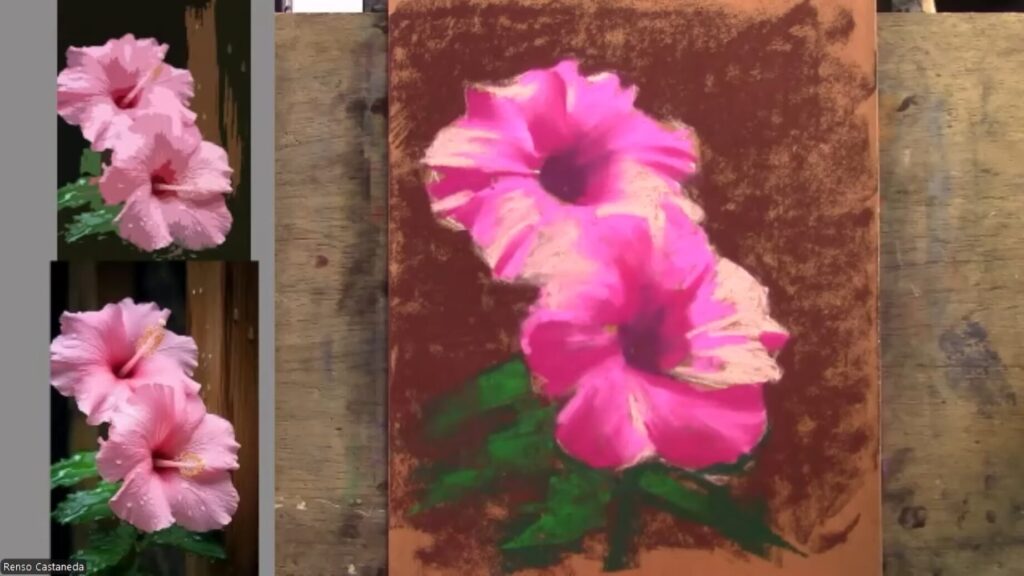
Step 4: Creating Depth with Edges
Types of Edges in Pastel Painting
| Edge Type | Effect | Where to Use |
|---|---|---|
| Sharp | High contrast, focal points | Petal tips, foreground flowers |
| Soft | Gentle transitions | Mid-ground petals, curved surfaces |
| Lost | No defined edge | Background leaves, shadowy areas |
Rule of Thumb: 80% soft/lost edges, 20% sharp edges for a natural look.
Blending Techniques
- Fingers – Best for smooth gradients.
- Sponge or blending stump – Good for textured effects.
- Layering – Avoid over-blending; let some strokes show.
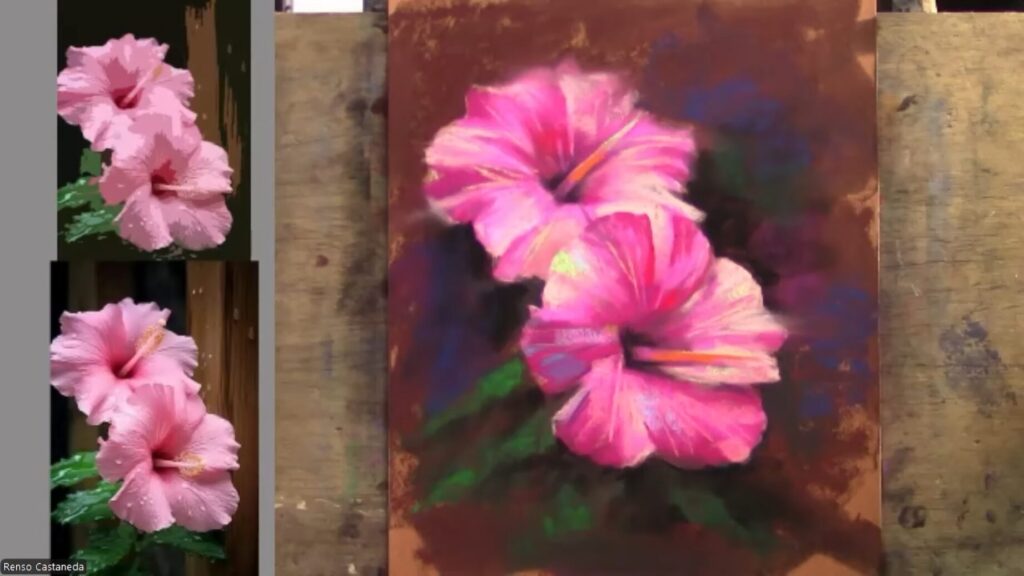
Step 5: Adding Final Details & Refinements
Enhancing Petal Texture
- Use side of pastel stick for subtle vein lines.
- Add warm/cool accents (e.g., light blue in shadows for depth).
- Scumble (lightly drag pastel) for a delicate, translucent effect.
Painting Water Droplets (Optional)
- Draw a highlight (top of drop).
- Add shadow (below drop).
- Soft reflected light (under shadow).
Pro Tip: Less is more—suggest droplets rather than over-detailing.
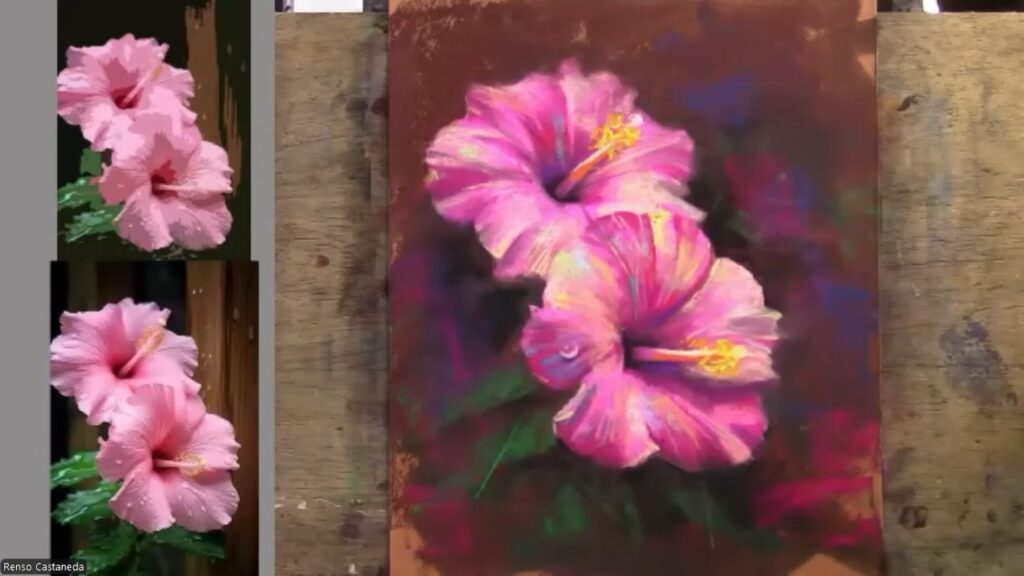
Bonus: Fixing Common Mistakes
❌ Problem: Colors look muddy.
✅ Solution: Limit layers; use a light hand.
❌ Problem: Flowers look flat.
✅ Solution: Increase contrast (darker darks, lighter lights).
❌ Problem: Overworked edges.
✅ Solution: Step back; soften with a clean finger.
Final Thoughts & Practice Exercise
Final Thoughts
With these techniques, how to paint flowers with pastels becomes an intuitive, joyful process. Start simple, embrace imperfections, and let colors shine!
- Practice one technique at a time (e.g., edges or values).
- Try different flowers (roses, tulips, daisies).
- Experiment with backgrounds (dark vs. light).
Now it’s your turn! Grab your pastels and paint a loose floral piece—remember, imperfections add charm.
FAQs
Q: What’s the easiest flower to paint with pastels?
A: Roses or tulips—their structured petals make shapes easier to define.
Q: How do I make pastel flowers look realistic?
A: Focus on values first, then refine edges and details.
Q: Can I use pastel pencils for fine details?
A: Yes! They’re great for veins, stems, and sharp edges.
Q: How do I protect my pastel painting?
A: Use fixative spray (light layers) or frame under glass.
By following this guide, you’ll master how to paint flowers with pastels in a loose, expressive style. Happy creating! 🌸
Support my Art Journey At not cost to you buying Art materials you use from my Amazon Store: https://www.amazon.com/shop/rensoart
Live Paint along Lessons on Patreon: https://www.patreon.com/c/rensocastaneda
